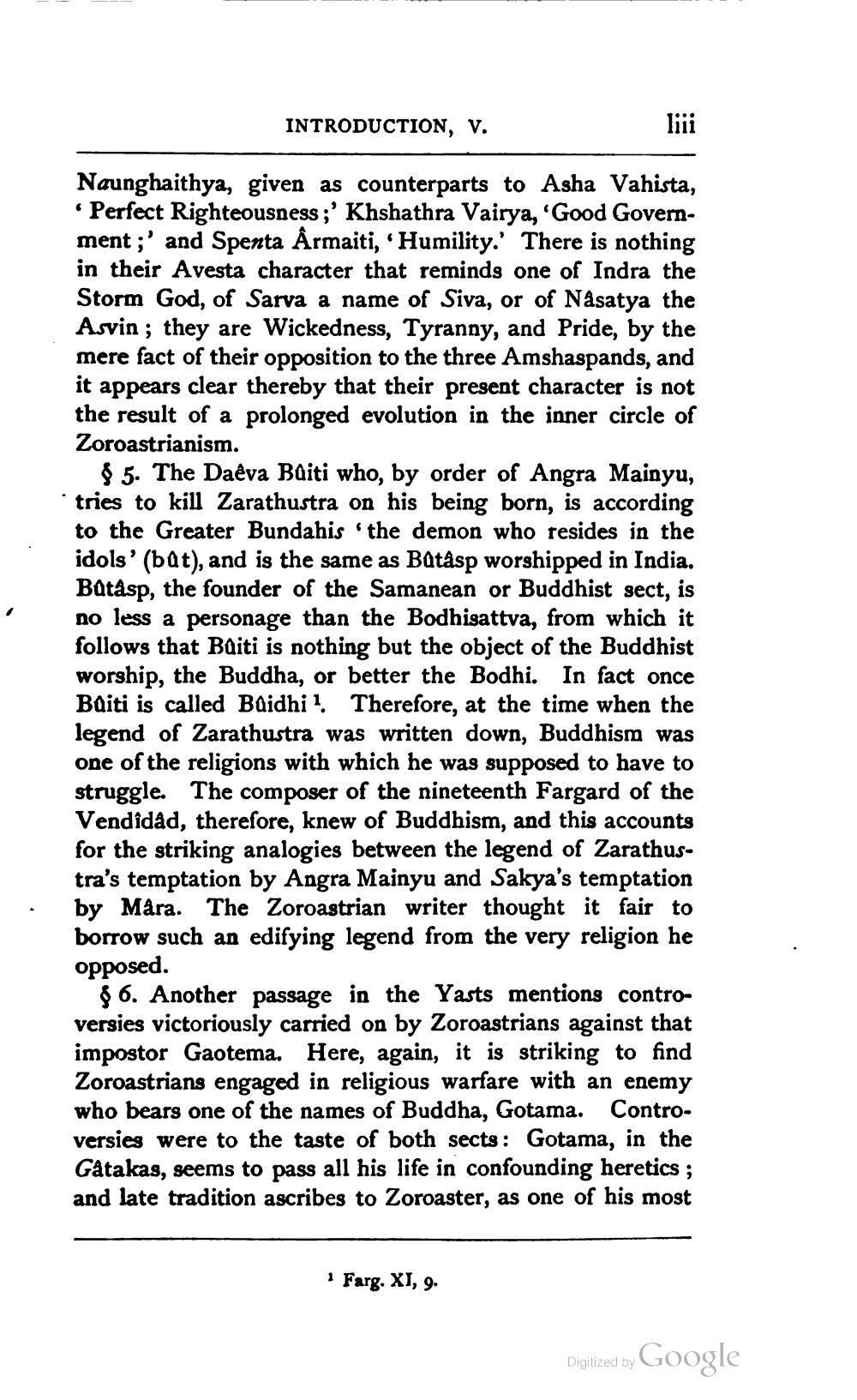________________
INTRODUCTION, V.
Naunghaithya, given as counterparts to Asha Vahista, • Perfect Righteousness;' Khshathra Vairya, 'Good Government;' and Spenta Årmaiti, Humility. There is nothing in their Avesta character that reminds one of Indra the Storm God, of Sarva a name of Siva, or of Nasatya the Asvin; they are Wickedness, Tyranny, and Pride, by the mere fact of their opposition to the three Amshaspands, and it appears clear thereby that their present character is not the result of a prolonged evolution in the inner circle of Zoroastrianism.
$ 5. The Daêva Boiti who, by order of Angra Mainyu, tries to kill Zarathustra on his being born, is according to the Greater Bundahis the demon who resides in the idols' (bat), and is the same as Batasp worshipped in India. Batasp, the founder of the Samanean or Buddhist sect, is no less a personage than the Bodhisattva, from which it follows that Baiti is nothing but the object of the Buddhist worship, the Buddha, or better the Bodhi. In fact once Buiti is called Buidhi 1. Therefore, at the time when the legend of Zarathustra was written down, Buddhism was one of the religions with which he was supposed to have to struggle. The composer of the nineteenth Fargard of the Vendidad, therefore, knew of Buddhism, and this accounts for the striking analogies between the legend of Zarathustra's temptation by Angra Mainyu and Sakya's temptation by Mara. The Zoroastrian writer thought it fair to borrow such an edifying legend from the very religion he opposed.
$ 6. Another passage in the Yasts mentions controversies victoriously carried on by Zoroastrians against that impostor Gaotema. Here, again, it is striking to find Zoroastrians engaged in religious warfare with an enemy who bears one of the names of Buddha, Gotama. Controversies were to the taste of both sects : Gotama, in the Gatakas, seems to pass all his life in confounding heretics ; and late tradition ascribes to Zoroaster, as one of his most
Farg. XI, 9.
Digitized by Google




